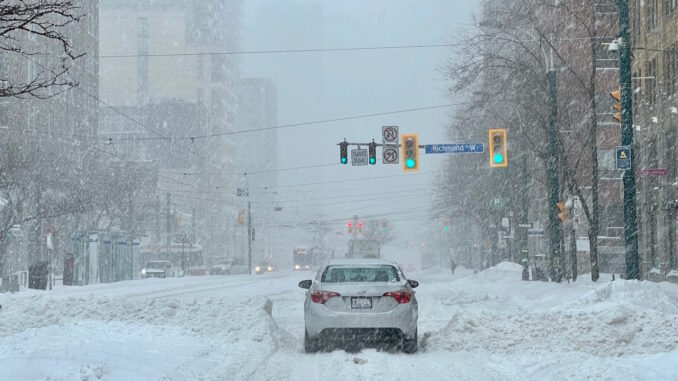
By Berly Thomas
Last winter was mild. This year we can expect a colder one, say climate experts. The major reason for this shift is the formation of La Niña in the Pacific, near the equator.
Because of the presence of the stronger El Niño, last winter was the warmest on record. According to climate experts, this winter is expected to be colder with below average temperatures than normal. The chances of colder-than-normal temperatures are higher, especially in the second half of the winter.
La Niña, like El Niño, has a big effect on the weather in Canada. Because it is affecting weather, it affects Canadian agriculture and the economy. The main feature of La Niña is the cooler than average sea surface temperatures in the central and eastern Pacific. La Niña usually affects the global weather conditions. With a vast geographical area and variety of climate zones, Canada is highly exposed to the impacts of the extreme weather conditions caused by La Niña.
La Niña typically brings in colder weather conditions to much of Canada. The impact of La Niña will be more visible in the western and northern regions. Provinces like British Columbia is expected to receive more rain and will experience lower temperatures. In other areas, the winter may be more harsh. These weather conditions contribute to the negative and positive impacts on La Niña in Canadian economy.
What to expect ?
In Canada, the impacts of La Niña are more visible in British Columbia. La Niña will bring cool air and a lot of rain to this area. The increased water supply due to more rain will directly affect agriculture in the area. As the La Niña conditions will prevail for several months, the cooler and wetter weather will boost agricultural production and hydroelectric power generation in the area.
While summer become cooler, winter become less colder in the area due to the warmer air. This is also helpful for agriculture. In southern and central British Columbia, La Niña is expected to bring warmer weather, which leads to heavy rains and may ultimately result in the risk of flooding in the area.
La Niña also influences precipitation, potentially bringing near-normal to above-normal moisture levels this winter. Compared to last year’s mixed precipitation events, this winter may see more snow-only weather. Colder temperatures favor snow rather than rain.Other factors, such as storm tracks, could affect snowfall totals. A wild card is the warming of the upper atmosphere over the North Pole, which may drive more cold air into the region. Meteorologists will continue monitoring these global weather patterns to assess their local impact this winter.
When to expect ?
In Canada, La Niña is expected to bring climatic changes by November. Climate scientists suggest that there is a 70% chance of formation of La Niña conditions now. It is expected to stay here until April 2025. Scientists suggest the occurrence of a milder La Niña this year.
Brother and Sister
La Niña means ‘The Little girl’ in Spanish. It is actually the opposite phenomenon of El Niño which means ‘The Little Boy’. The name El Niño was first used by fishermen in Peru. In the 1600’s they discovered unusual appearance of warm water in the Pacific Ocean. Because they noticed this during the Christmas time, they called it ‘El Nino de Navidad’ which means the Christ Child. During La Niña events, the sea water became cold, and it was actually the opposite of El Niño.
Over time, scientists recognized the El Niño and La Niña patterns and identified them as global climatic events that impact several countries.
Impact on climate change
A debate is going on regarding the primary appearance of La Niña and climate change. Some people argue that La Niña has no direct connection with climate change, while others argue that El Niño and La Niña are the outcomes of climate change. According to climate scientists, there are some remarkable connections between the two. The question which started first is still unanswered, yet its is proven that climate change has an impact on the frequency of appearance of El Niño and La Niña patterns. Different research shows that human caused greenhouse gas emissions are increasing the frequency and intensity of them.
According to a study published in the scientific journal Nature last year, global warming is contributing to much longer and more intense La Niña events and this will get worse in the coming years. Researchers found an increase in the frequency of La Niña from 19% to 33% as a result of the greenhouse gas emissions.

Be the first to comment